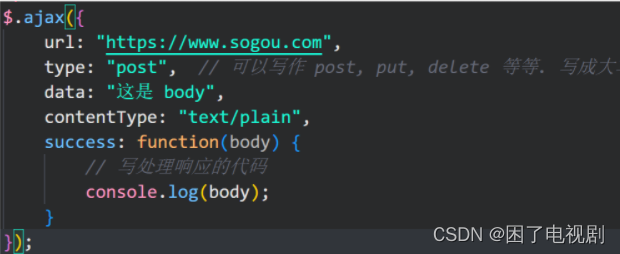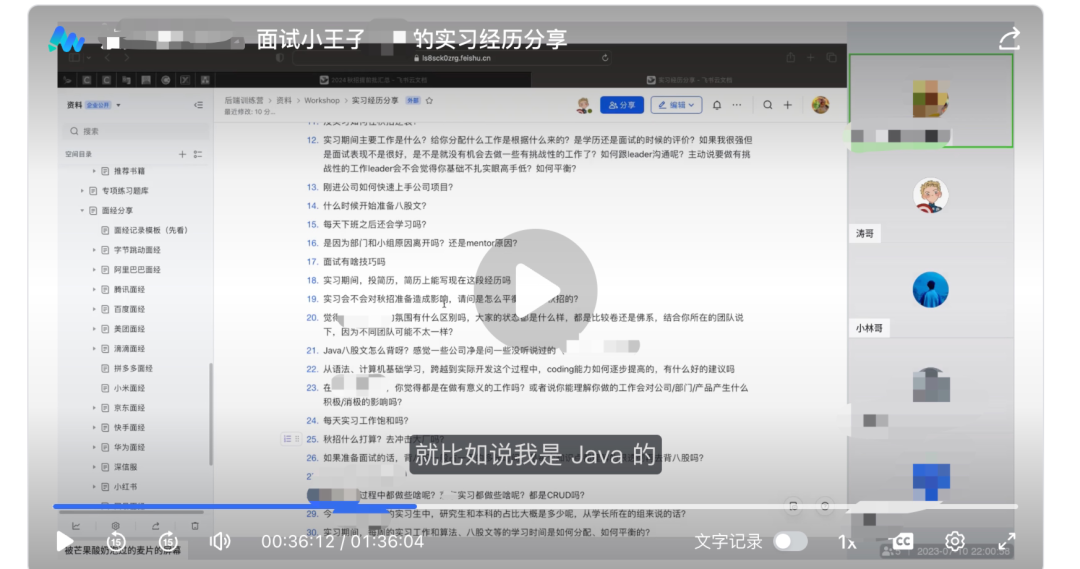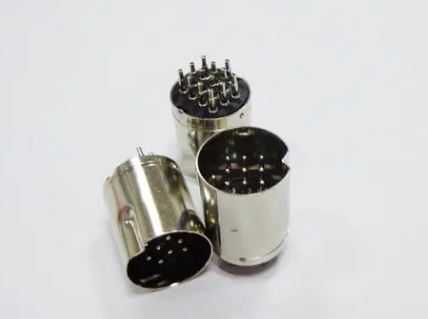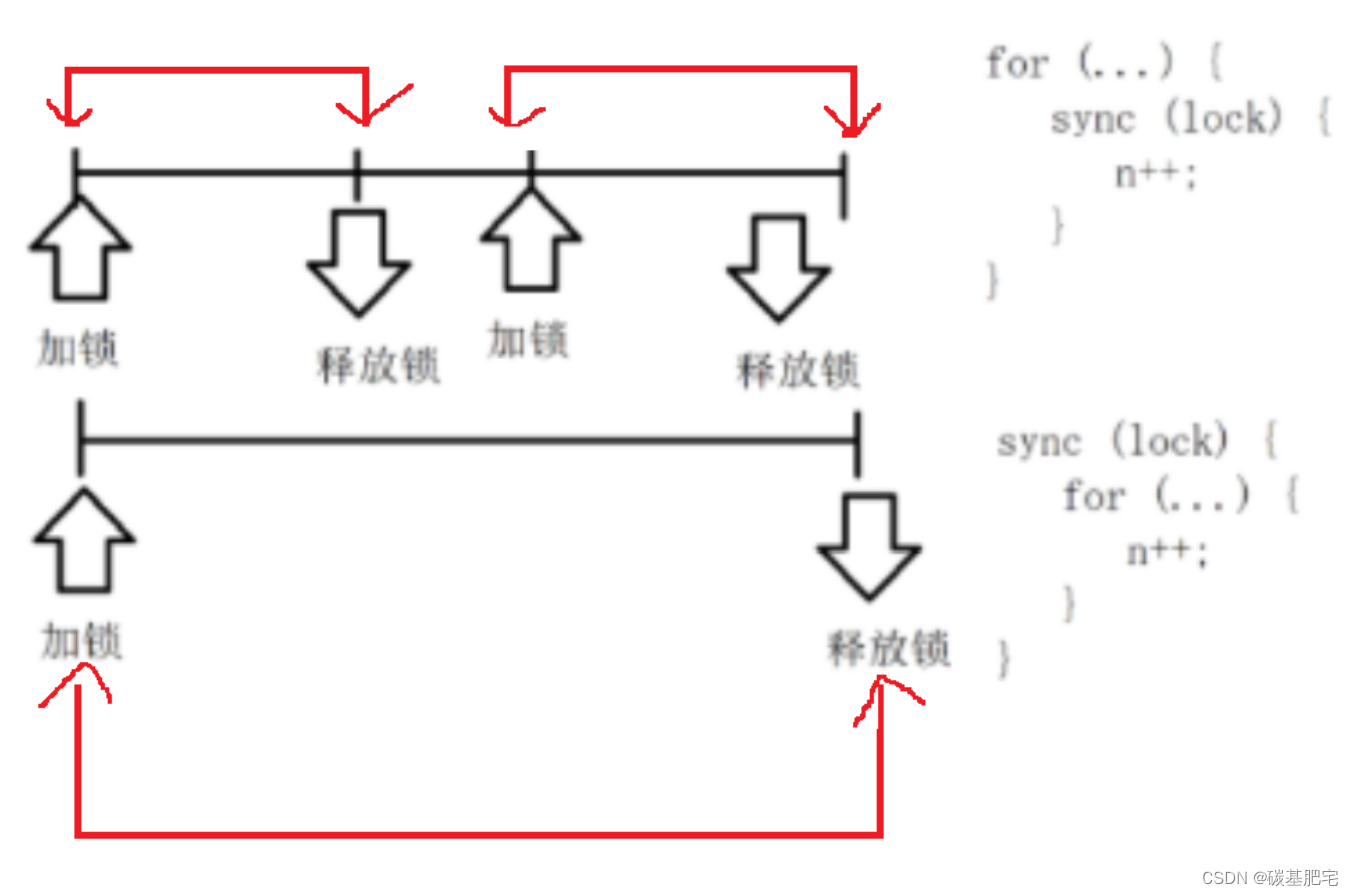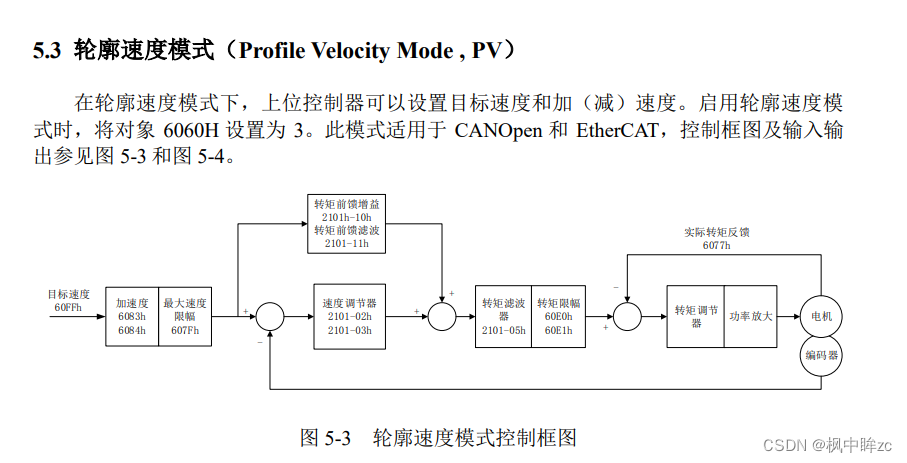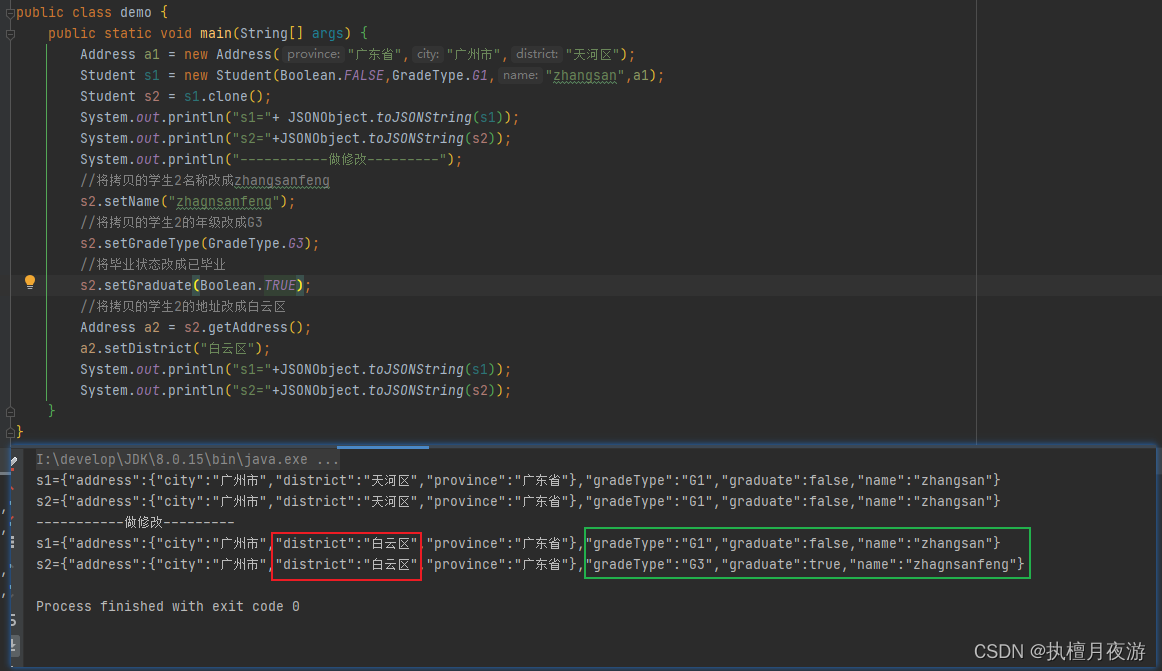31.1list基本概念
功能:将数据进行链式存储
链表(list)是一种物理存储上非连续的存储结构,数据元素的逻辑顺序是通过链表中的指针链接实现的
链表的组成:链表由一系列结点组成
结点的组成:一个是存储数据元素的数据域,另一个是存储下一个结点地址的指针域
链表的优点:
可以快速对任意位置进行快速插入或删除元素
链表的缺点:
容器遍历速度没有数组快
占用空间比数组大
STL中的链表是一个双向循环链表
(双向:每个结点记录了上一个位置也记录了下一个位置)
(循环:最后一个结点也记录的是第一个结点位置,第一个结点也记录了最后一个结点位置)

由于链表的存储方式并不是连续的内存空间,因此链表list中的迭代器只支持前移和后移,属于双向迭代器
list的优点 :
采用动态存储分配,不会造成内存浪费和溢出
链表执行插入和删除操作十分方便,修改指针即可,不需要移动大量元素
list的缺点:
链表灵活,但是空间(指针域)和时间(遍历)额外耗费较大
list有一个重要的性质,插入操作和删除操作都不会造成原有的list迭代器的失效,这在vector是不成立的

(箭头为迭代器,vector容器数组中内存不够了,把所以数据转移到新的内存,原来的迭代器(箭头)就失效了。链表中随便插入删除都不会影响)
总结:STL中list和vector是两个最常被使用的容器,各有优缺点
31.2list构造函数
功能描述:创建list容器
函数原型:
list<T>lst; //list采用模板类实现,对象的默认构造形式
list(beg,end); //构造函数将[beg,end)区间中的元素拷贝给本身
list(n,elem); //构造函数将n个elem拷贝给本身
list(const list &lst); //拷贝构造函数
#include<iostream>
using namespace std;
#include<list>
void printList(const list<int>&l)
{
for (list<int>::const_iterator it = l.begin(); it != l.end(); it++)
{
cout << *it << " ";
}
cout << endl;
}
void test01()
{
list<int>l1;
for (int i = 0; i < 10; i++)
{
l1.push_back(i);
l1.push_front(i);
}
printList(l1);
//输出结果:9 8 7 6 5 4 3 2 1 0 0 1 2 3 4 5 6 7 8 9
list<int>l2(l1.begin(), l1.end());
printList(l2);
//输出结果:9 8 7 6 5 4 3 2 1 0 0 1 2 3 4 5 6 7 8 9
list<int>l3(5, 10);
printList(l3);
//输出结果:10 10 10 10 10
list<int>l4(l1);
printList(l4);
//输出结果:9 8 7 6 5 4 3 2 1 0 0 1 2 3 4 5 6 7 8 9
}
int main()
{
test01();
system("pause");
return 0;
}总结:list构造方式同其他几个STL常用容器,熟练掌握即可
31.3list赋值
功能描述:给list容器进行赋值,以及交换list容器
函数原理:
assign(beg,end); //将[beg,end)区间中的数据拷贝给本身
assign(n,elem); //将n个elem拷贝赋值给本身
list& operator=(const list &lst); //重载等号操作符
swap(lst); //将lst与本身的元素互换
#include<iostream>
using namespace std;
#include<list>
void printList(const list<int>&l)
{
for (list<int>::const_iterator it = l.begin(); it != l.end(); it++)
{
cout << *it << " ";
}
cout << endl;
}
void test01()
{
list<int>l1;
for (int i = 0; i < 10; i++)
{
l1.push_back(i);
l1.push_front(i);
}
printList(l1);
//输出结果:9 8 7 6 5 4 3 2 1 0 0 1 2 3 4 5 6 7 8 9
list<int>l2;
l2.assign(l1.begin(), l1.end());
printList(l2);
//输出结果:9 8 7 6 5 4 3 2 1 0 0 1 2 3 4 5 6 7 8 9
list<int>l3;
l3.assign(5, 10);
printList(l3);
//输出结果:10 10 10 10 10
list<int>l4;
l4 = l1;
printList(l4);
//输出结果:9 8 7 6 5 4 3 2 1 0 0 1 2 3 4 5 6 7 8 9
l4.swap(l3);
printList(l3);
//输出结果:9 8 7 6 5 4 3 2 1 0 0 1 2 3 4 5 6 7 8 9
printList(l4);
//输出结果:10 10 10 10 10
}
int main()
{
test01();
system("pause");
return 0;
}总结:list赋值和交换操作能够灵活运用即可
31.4list大小操作
功能描述;对list容器的大小进行操作
函数原型:
size(); //返回容器中元素的个数
empty(); //判断容器是否为空
resize(num); //重新 指定容器的长度位num,若容器变长则以默认值填充新位置
//如果容器变短,则末尾超出容器长度的元素被删除
resize(num,elem); //重新指定容器的长度num,若容器变长,则以elem值填充新位置
//如果容器变短,则末尾超出容器长度的元素被删除
#include<iostream>
using namespace std;
#include<list>
void printList(const list<int>&l)
{
for (list<int>::const_iterator it = l.begin(); it != l.end(); it++)
{
cout << *it << " ";
}
cout << endl;
}
void test01()
{
list<int>l1;
for (int i = 0; i < 10; i++)
{
l1.push_back(i);
l1.push_front(i);
}
printList(l1);
//输出结果:9 8 7 6 5 4 3 2 1 0 0 1 2 3 4 5 6 7 8 9
if(!l1.empty())
{
cout << "l1不为空" << endl;
cout << "l1大小:" << l1.size() << endl;
}
else
{
cout << "l1位空" << endl;
}
//输出结果:l1不为空
// l1大小:20
l1.resize(25);
printList(l1);
//输出结果:9 8 7 6 5 4 3 2 1 0 0 1 2 3 4 5 6 7 8 9 0 0 0 0 0
l1.resize(10);
printList(l1);
//输出结果:9 8 7 6 5 4 3 2 1 0
l1.resize(15, 10);
printList(l1);
//输出结果:9 8 7 6 5 4 3 2 1 0 10 10 10 10 10
}
int main()
{
test01();
system("pause");
return 0;
}总结:
判断是否位空--empty
返回元素个数--size
重新指定个数--resize
31.5list插入和删除
功能描述:对list容器进行数据的插入和删除
函数原型:
push_back(elem); //在容器尾部加入一个元素
pop_back(); //删除容器中最后一个元素
push_front(elem); //在容器开头插入一个元素
pop_front(); //从容器开头移除第一个元素
insert(pos,elem); //在pos位置插elem元素的拷贝,返回新数据的位置
insert(pos,n,elem); //在pos位置插入n个elem数据,无返回值
insert(pos,beg,end); //在pos位置插入[beg,end)区间的元素,无返回值
clear(); //移除容器的所有数据
erase(beg,end); //删除[beg,end)区间的数据,返回下一个数据的位置
erase(pos); //删除pos位置的数据,返回下一个数据的位置
remove(elem); //删除容器中所有与elem值匹配的元素 (如移除所有0)
#include<iostream>
using namespace std;
#include<list>
void printList(const list<int>&l)
{
for (list<int>::const_iterator it = l.begin(); it != l.end(); it++)
{
cout << *it << " ";
}
cout << endl;
}
void test01()
{
list<int>l1;
for (int i = 0; i < 10; i++)
{
l1.push_back(i);
}
printList(l1);
//输出结果:0 1 2 3 4 5 6 7 8 9
l1.pop_back();
printList(l1);
//输出结果:0 1 2 3 4 5 6 7 8
l1.pop_front();
printList(l1);
//输出结果:1 2 3 4 5 6 7 8
list<int>l2;
l2.push_front(5);
l2.push_front(4);
l2.push_front(3);
l2.push_front(2);
l2.push_front(1);
printList(l2);
//输出结果:1 2 3 4 5
l1.insert(l1.begin(), 0);
printList(l1);
//输出结果:0 1 2 3 4 5 6 7 8
l1.insert(l1.end(), 5, 0);
printList(l1);
//输出结果:0 1 2 3 4 5 6 7 8 0 0 0 0 0
l1.insert(l1.begin(), l2.begin(), l2.end());
printList(l1);
//输出结果:1 2 3 4 5 0 1 2 3 4 5 6 7 8 0 0 0 0 0
l2.clear();
if (!l2.empty())
{
cout << "l2不为空" << endl;
}
else
{
cout << "l2为空" << endl;
}
//输出结果:l2为空
l1.remove(0);
printList(l1);
//输出结果:1 2 3 4 5 1 2 3 4 5 6 7 8
l1.erase(l1.begin());
printList(l1);
//输出结果:2 3 4 5 1 2 3 4 5 6 7 8
l1.erase(l1.begin(), l1.end());
if (!l1.empty())
{
cout << "l1不为空" << endl;
}
else
{
cout << "l1为空" << endl;
}
//输出结果:l1为空
}
int main()
{
test01();
system("pause");
return 0;
}insert插入,erase删除start后一位
#include<iostream>
using namespace std;
#include<list>
void printList(const list<int>&l)
{
for (list<int>::const_iterator it = l.begin(); it != l.end(); it++)
{
cout << *it << " ";
}
cout << endl;
}
void test01()
{
list<int>l1;
for (int i = 0; i < 10; i++)
{
l1.push_back(i);
}
printList(l1);
//输出结果:0 1 2 3 4 5 6 7 8 9
list<int>::iterator it = l1.begin();
l1.insert(++it, 1000);
printList(l1);
//输出结果:0 1000 1 2 3 4 5 6 7 8 9
it=l1.begin();
l1.erase(++it);
printList(l1);
//输出结果:0 1 2 3 4 5 6 7 8 9
}
int main()
{
test01();
system("pause");
return 0;
}总结:
尾插--push_back
尾删--pop_back
头插--push_front
头删--pop_front
插入--insert
删除--erase
移除--remove
清空--clear
31.6list数据存取
功能描述:对list容器中数据进行存取
函数原理:
front(); //返回第一个元素
back(); //返回最后一个元素
#include<iostream>
using namespace std;
#include<list>
void printList(const list<int>&l)
{
for (list<int>::const_iterator it = l.begin(); it != l.end(); it++)
{
cout << *it << " ";
}
cout << endl;
}
void test01()
{
list<int>l1;
for (int i = 0; i < 10; i++)
{
l1.push_back(i);
}
printList(l1);
//输出结果:0 1 2 3 4 5 6 7 8 9
cout << "l1第一个元素:" << l1.front() << endl;
//输出结果:l1第一个元素:0
l1.front() = 10;
cout << "l1第一个元素:" << l1.front() << endl;
//输出结果:l1第一个元素:10
printList(l1);
//输出结果:10 1 2 3 4 5 6 7 8 9
cout << "l1最后一个元素:" << l1.back() << endl;
//输出结果:l1最后一个元素:9
l1.back() = 10;
cout << "l1最后一个元素:" << l1.back() << endl;
//输出结果:l1最后一个元素:10
printList(l1);
//输出结果:10 1 2 3 4 5 6 7 8 10
//l1[0]不可以用[]访问list容器中的元素
//l1.at(0)不可以用at方式访问list容器中的元素
//原因是list本质为链表,不是用连续线性空间存储数据,迭代器也不支持随机访问
}
int main()
{
test01();
system("pause");
return 0;
}验证迭代器是不支持随机访问的
#include<iostream>
using namespace std;
#include<list>
void printList(const list<int>&l)
{
for (list<int>::const_iterator it = l.begin(); it != l.end(); it++)
{
cout << *it << " ";
}
cout << endl;
}
void test01()
{
list<int>l1;
for (int i = 0; i < 10; i++)
{
l1.push_back(i);
}
printList(l1);
//输出结果:0 1 2 3 4 5 6 7 8 9
//验证迭代器是不支持随机访问的
list<int>::iterator it = l1.begin();
it++;//可以it++,不可以 it = it + 1;,证明不支持随机访问
it--;//支持双向
}
int main()
{
test01();
system("pause");
return 0;
}总结:
list容器中不可以通过[]或者at方式访问数据
返回第一个元素--front
返回最后一个元素--back
31.7list反转和排序
功能描述:将容器中的元素反转,以及将容器中的数据进行排列
函数原型;
reverse(); //反转链表
sort(); //链表排序
#include<iostream>
using namespace std;
#include<list>
void printList(const list<int>& l)
{
for (list<int>::const_iterator it = l.begin(); it != l.end(); it++)
{
cout << *it << " ";
}
cout << endl;
}
bool myCompare(int v1, int v2)
{
//降序 就让第一个数>第二个数
return v1 > v2;
}
void test01()
{
list<int>l1;
l1.push_back(5);
l1.push_back(2);
l1.push_back(1);
l1.push_back(7);
l1.push_back(4);
l1.push_back(9);
l1.push_back(3);
l1.push_back(8);
l1.push_back(6);
printList(l1);
//输出结果:5 2 1 7 4 9 3 8 6
l1.reverse();
printList(l1);
//输出结果:6 8 3 9 4 7 1 2 5
l1.sort();
printList(l1);
//输出结果:1 2 3 4 5 6 7 8 9
//所有不支持随机访问迭代器的容器,不可以用标准算法
//不支持随机访问迭代器的容器,内部会提供对应一些算法
//不可以用全局函数如sort(l1.begin(),l1.end());
//降序
l1.sort(myCompare);
printList(l1);
//输出结果:9 8 7 6 5 4 3 2 1
}
int main()
{
test01();
system("pause");
return 0;
}总结:
反转--reverse
排序--sort(成员函数)
31.8排序案例
案例描述:将Person自定义数据类型进行排序,Person中属性有姓名、年龄、身高
排序规则:按照年龄进行升序,如果年龄相同按照身高进行降序
#include<iostream>
using namespace std;
#include<list>
class Person
{
public:
Person(string name, int age, int hight)
{
this->m_Name = name;
this->m_Age = age;
this->m_Hight = hight;
}
public:
string m_Name;
int m_Age;
int m_Hight;
};
bool comparePerson(Person& p1, Person& p2)
{
if (p1.m_Age == p2.m_Age)//年龄相同时按身高降序
{
return p1.m_Hight > p2.m_Hight;
}
return p1.m_Age < p2.m_Age;//按照年龄升序
}
void test01()
{
list<Person>l;
Person p1("张三", 10, 180);
Person p2("李四", 30, 160);
Person p3("王五", 20, 190);
Person p4("赵六", 30, 170);
l.push_back(p1);
l.push_back(p2);
l.push_back(p3);
l.push_back(p4);
for (list<Person>::iterator it = l.begin(); it != l.end(); it++)
{
cout << "姓名:" << it->m_Name << " 年龄:" << it->m_Age << " 身高:" << it->m_Hight << endl;
}
cout << "--------------------------------" << endl;
//排序
cout << "排序后:" << endl;
l.sort(comparePerson);
for (list<Person>::iterator it = l.begin(); it != l.end(); it++)
{
cout << "姓名:" << it->m_Name << " 年龄:" << it->m_Age << " 身高:" << it->m_Hight << endl;
}
}
int main()
{
test01();
system("pause");
return 0;
}输出结果:
姓名:张三 年龄:10 身高:180
姓名:李四 年龄:30 身高:160
姓名:王五 年龄:20 身高:190
姓名:赵六 年龄:30 身高:170
--------------------------------
排序后:
姓名:张三 年龄:10 身高:180
姓名:王五 年龄:20 身高:190
姓名:赵六 年龄:30 身高:170
姓名:李四 年龄:30 身高:160总结:对于自定义数据类型,必须要指定排序规则,否则编译器不知道如何进行排序
高级排序只是在排序规则上在进行一次编辑规则制定,并不复杂
